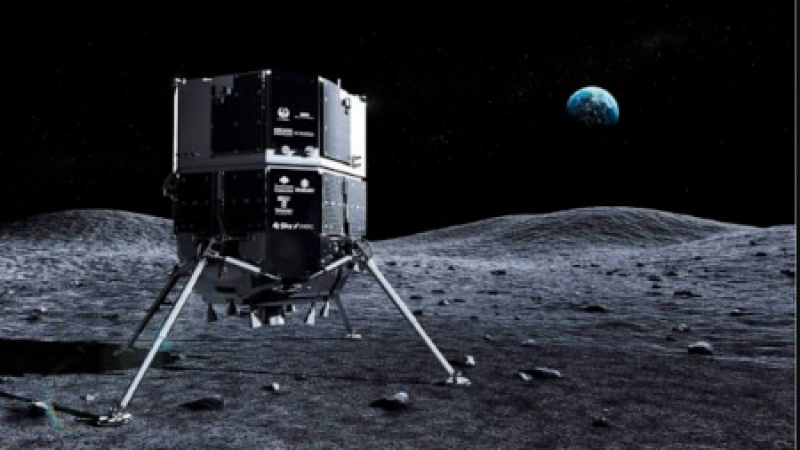
Cape Canaveral: With the United Arab Emirates' first lunar rover and a toy-like Japanese robot intended to roll around in gray dust, a Tokyo-based company on Sunday launched its own private lander for a Moon mission atop a SpaceX launched.
The journey of the lander to the moon and the completion of its experiments will take about five months.
To save money and have more room for cargo, the company iSpace designed its craft to use less fuel. It is traveling to the Moon on a low-speed, low-energy trajectory, flying 1 million miles (1.6 million kilometers) from Earth before turning around and hitting the Moon by late April.
Also Read: 1,500,000,000 inactive Twitter accounts will be deleted by Elon Musk
In contrast, it took five days for NASA's Orion crew capsule and test dummy to reach the Moon last month. Sunday's Pacific splashdown marks the end of the lunar flyby mission.
Atlas Crater, measuring more than 50 miles (87 kilometers) across and just over a mile (2 kilometers) deep, is located in the near-northeastern region of the Moon and will be the target of the iSpace lander. The lander is more than 7 feet (2.3 m) tall when all four of its legs are extended.
The UAE wants to explore the Moon in addition to Mars, where a science satellite is already in orbit. Like everything else on the mission, its rover, named Rasheed after Dubai's royal family, weighs only 22 pounds (10 kg) and will operate on the surface for about 10 days.
Additionally, a Japanese space agency orange-shaped sphere that will turn into a wheeled robot on the Moon is aboard the lander. A solid state battery from a Japanese spark plug company, a flight computer with artificial intelligence from an Ottawa, Ontario, company and 360-degree cameras from a Toronto-area company are also on the flight.
A small NASA laser experiment that was carried by a rocket is now traveling independently to the Moon to search for ice in the permanently shadowed craters of the Moon's south pole.
Also Read: Asus ROG Strix G17 is discounted by Rs. 37,000.
Hakuto, which is Japanese for white rabbit, is the name of the space mission. In Asian folklore, a white rabbit is rumored to live on the moon. The private company intends to conduct a second lunar landing in 2024 and a third in 2025.
Ispace, which was founded in 2010, placed among the top three in the Google Lunar XPRIZE competition, which called for a successful Moon landing by 2018. Ispace's lunar rover was never launched.
2019 saw a moon landing by a different finalist, an Israeli non-profit organization called SpaceIL. However, the Beresheet spacecraft crashed into the Moon and was discarded instead of making a soft landing.
Espace is now on track to become one of the first private entities to attempt a moon landing, launching Sunday morning from the Cape Canaveral Space Force Station.
Lunar landers developed by Astrobiotic Technology of Pittsburgh and Intuitive Machines of Houston could reach the Moon before iSpace due to shorter cruise times, despite not launching until early next year.
Starting with the former Soviet Union's Luna 9 mission in 1966, only Russia, the United States, and China have accomplished so-called "soft landings" on the Moon. Additionally, only the United States has sent astronauts to the Moon, with a total of 12 men in six landings.
Apollo 17 astronauts Eugene Cernan and Harrison Schmitt made their final lunar landing on December 11, 1972, which is celebrated on Sunday.
According to iSpace founder and CEO Takeshi Hakamada, who was not around at the time, the excitement of the technology was at the heart of NASA's Apollo moon missions. "It's the thrill of business now,"
The dawn of the lunar economy has come, Hakamada said during the SpaceX launch webcast. We should see the moon.
Also Read: Twitter will roll out new ad placement controls
Liftoff was scheduled to happen two weeks earlier, but SpaceX called it off to perform additional rocket inspections.
The recycled first-stage booster splashed down at Cape Canaveral eight minutes after liftoff, with double sonic booms echoing throughout the night.